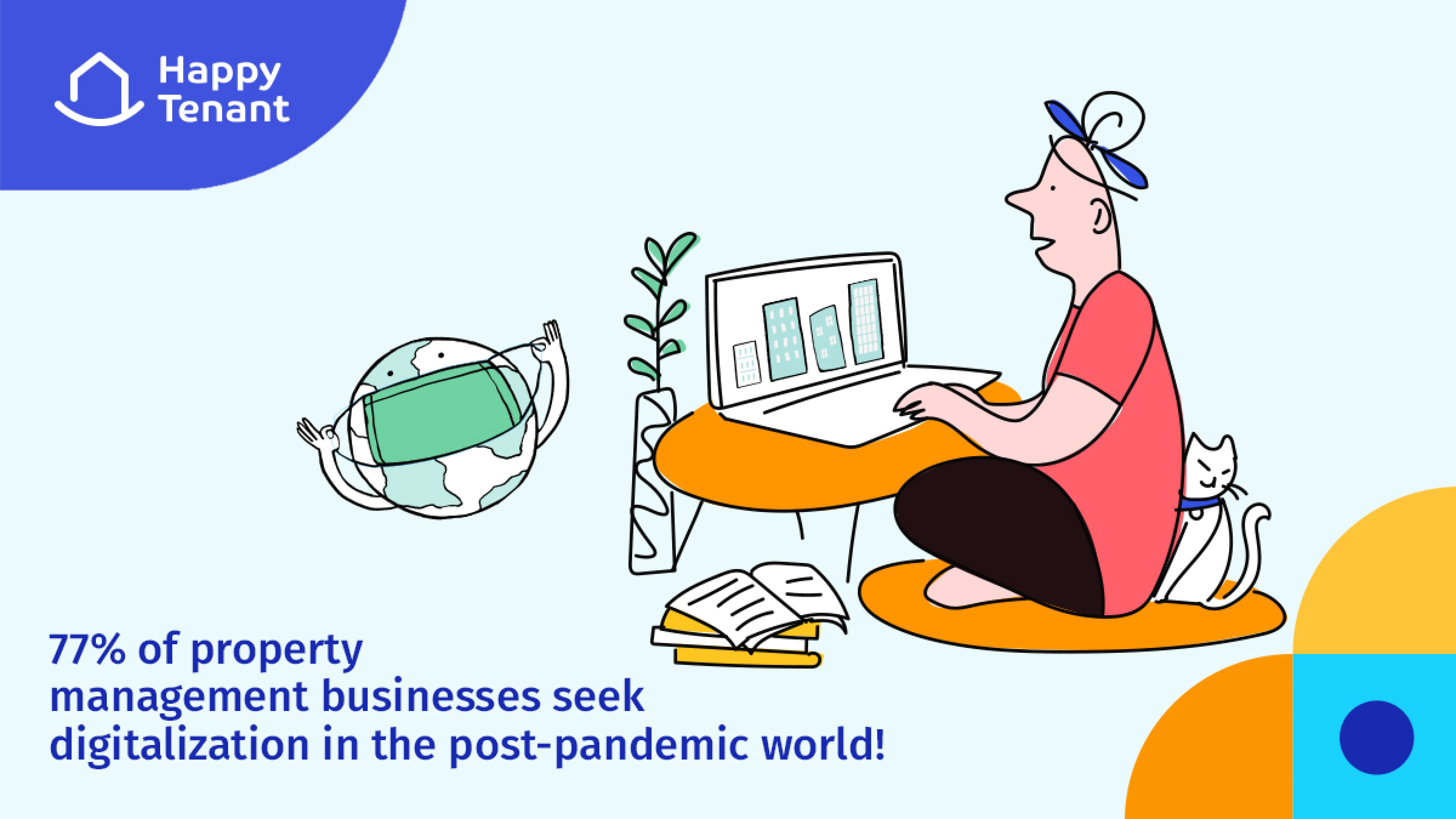


HappyTenant automates all your property management operations, eliminates errors, and is designed to let you work paperless anytime anywhere.
With the spread of Covid’19, the world witnessed a sudden stop in all its economic and life activities. Businesses faced huge losses and adopt major shifts in working style, WFH become the norm and only way to continue operations. Both business operations and consumer demands have changed drastically in the post-pandemic world!
Digital adoption has taken a quantum leap at both the organizational and industry levelsDuring the pandemic, consumers have moved dramatically toward online channels, and companies and industries have responded in turn. The survey results confirm the rapid shift toward interacting with Customers through digital channels.

Technology’s strategic importance has changed radically during the crisis and the shift is most likely to stick through. The pandemic accelerated existing trends in remote work, e-commerce, and automation Remote work and virtual meetings are likely to continue, both the business and workforce responded positively to remote working. On one hand, the businesses voted that remote work is done without a loss of productivity while on the other hand worker feel more satisfied with the remote work setting, they can be with their families while they work, and the independent studies’ graphs have shown an increase in productivity and employee happiness.
Technology has proven business means that were never imagined before. Connecting with global partners, clients, conferences, or Customer is far more simplified and effective than past. The travel time, cost, and hassle all have been reduced drastically with virtual meetings. And not just this, the acceptability of virtual meeting/businesses has opened unlimited opportunities for the business to grow globally.
Increased attendance and reduced travel – flexibility in scheduling meetings and reduced need for travel make it easier to increase attendance while leading to associated cost savings for the company and a reduced carbon footprint.
Shorter and crisper presentations – the ability to schedule shorter and more frequent meetings allows for agendas to be more compact and address specific issues.
More inclusive and focused conversations – meetings can be more direct and focused, with both full board and committee meetings able to address individual topics on a more timely basis.
Broader exposure to executives and experts – meeting virtually makes it easier to bring in more members on board, gives greater exposure to executives; it also allows for experts to be brought in more easily to give detailed information and provide the opportunity to ask questions directly.
Before the pandemic hit, nearly half of businesses reported that they saw technology as a means of reducing company costs. However, with the pandemic spreading and businesses beginning to discover the other values of technology, more businesses reported that modernizing their capabilities, gaining a competitive advantage, having more efficient and automated operations all outpaced concerns about reducing costs.
The pandemic helped to accelerate the digital transformation and created a landscape that will continue to encourage innovation and technological adoption moving forward. As businesses begin to better understand the capabilities of these types of modern technology, they will also begin to understand the opportunities that lie before them, even after the pandemic is over.
We help companies and individuals streamline their workflows and processes.